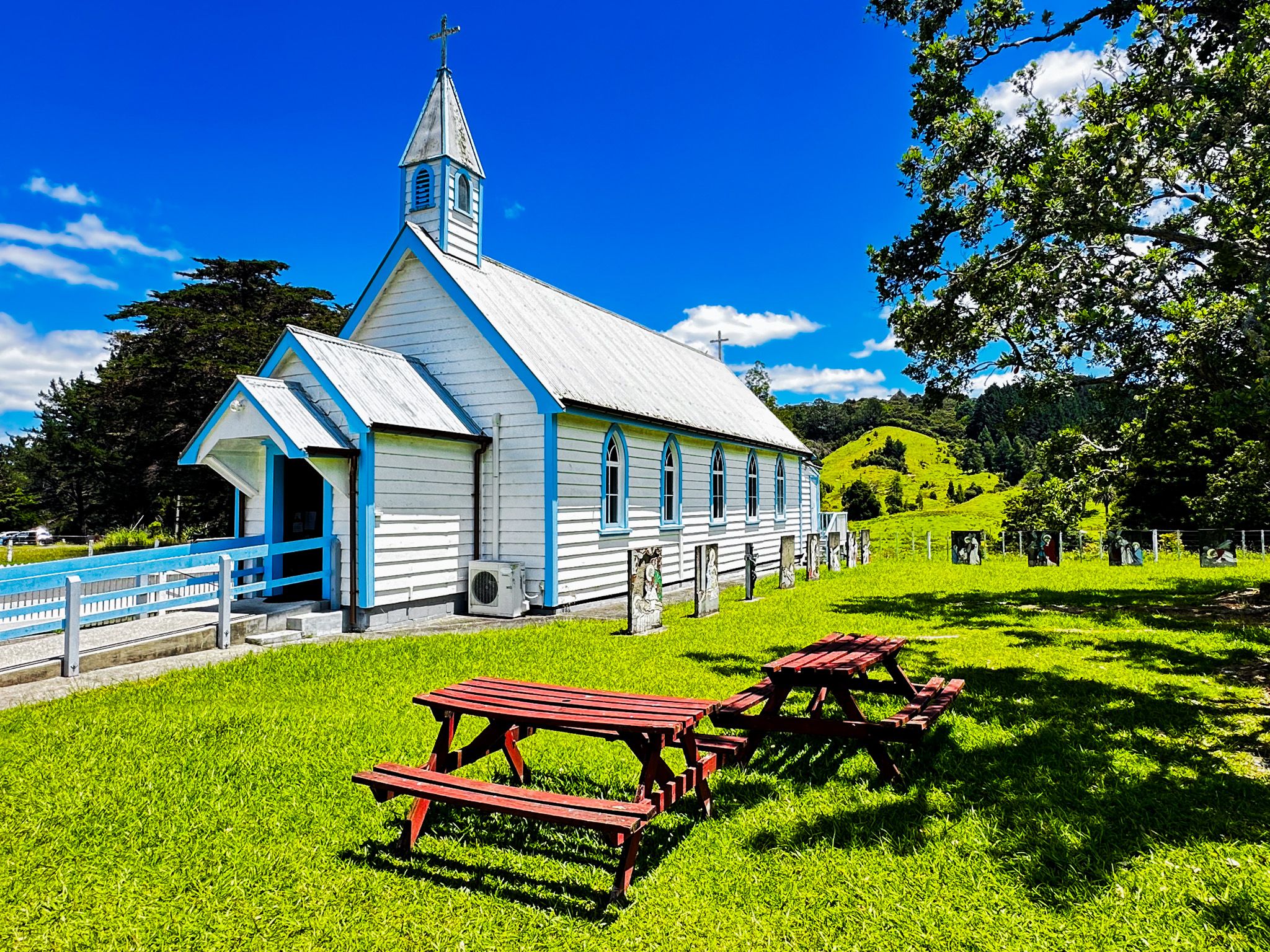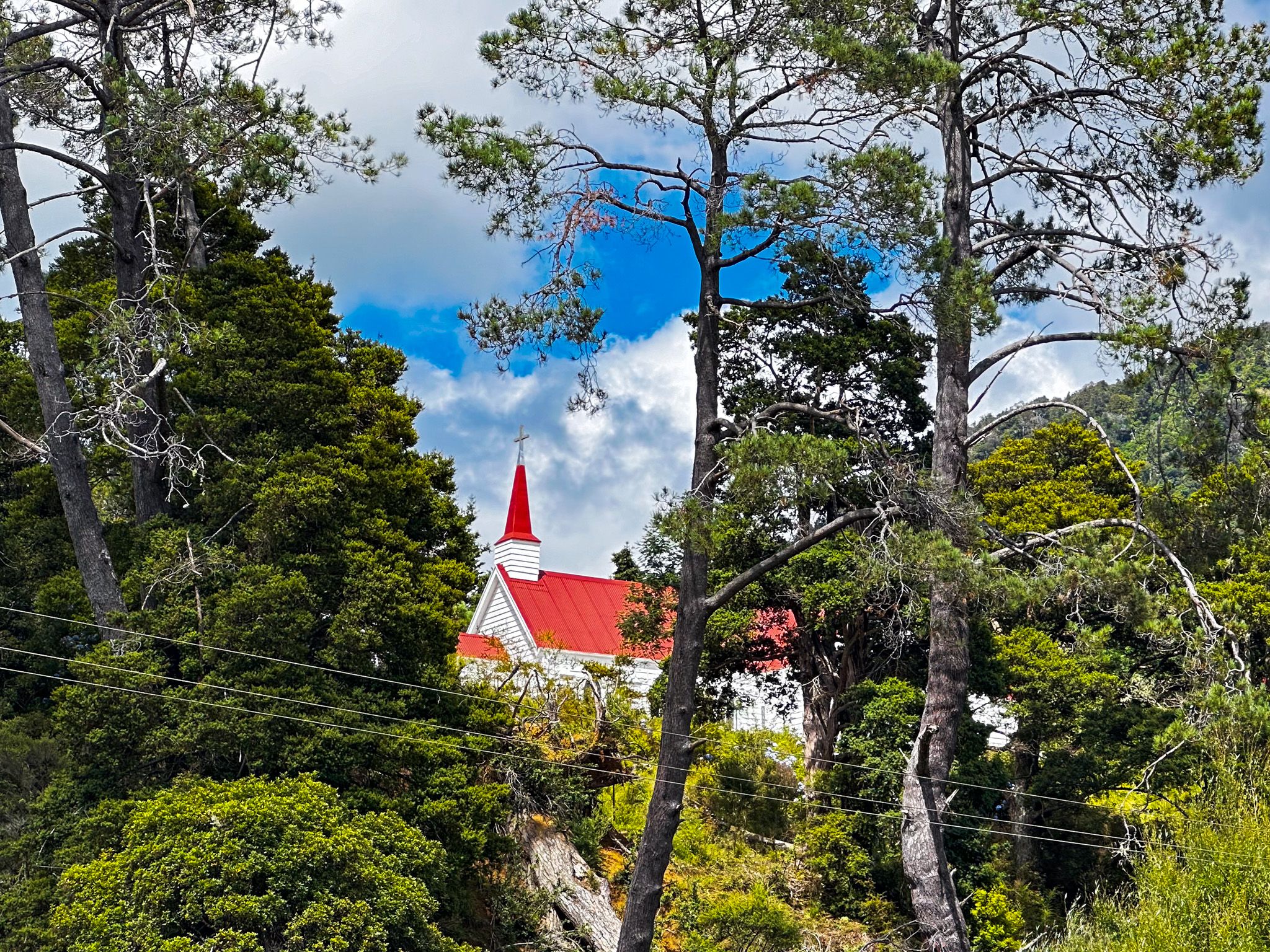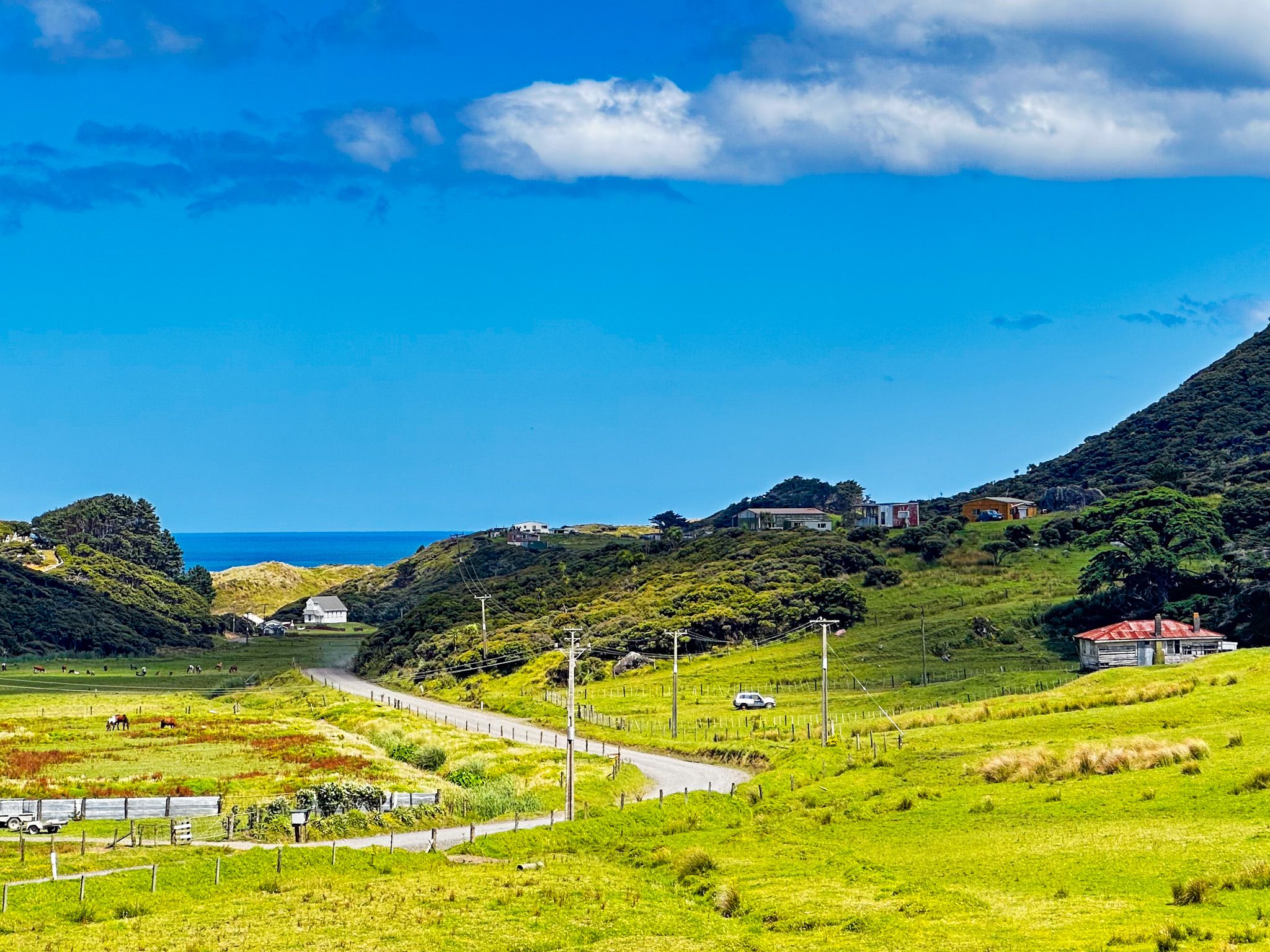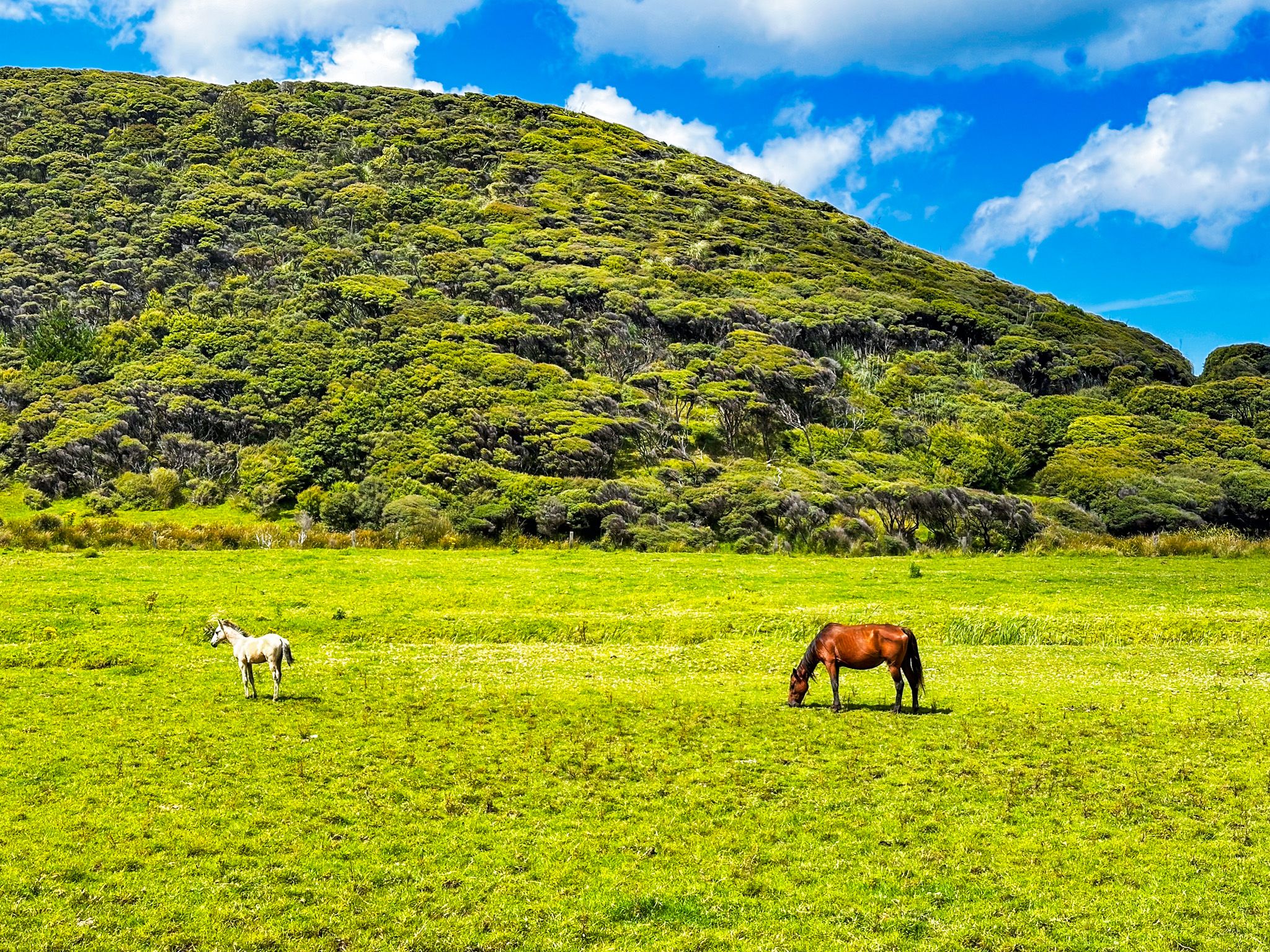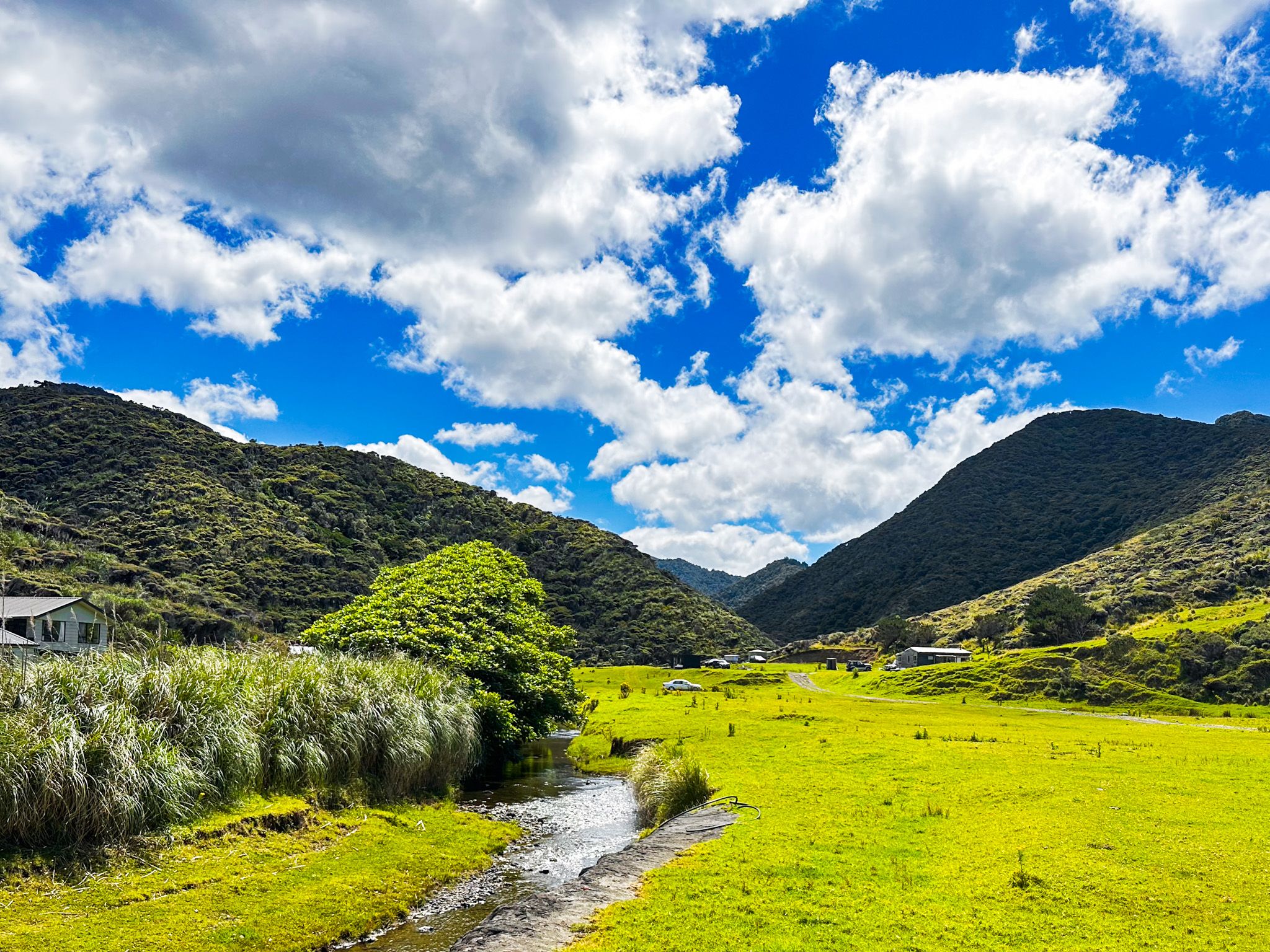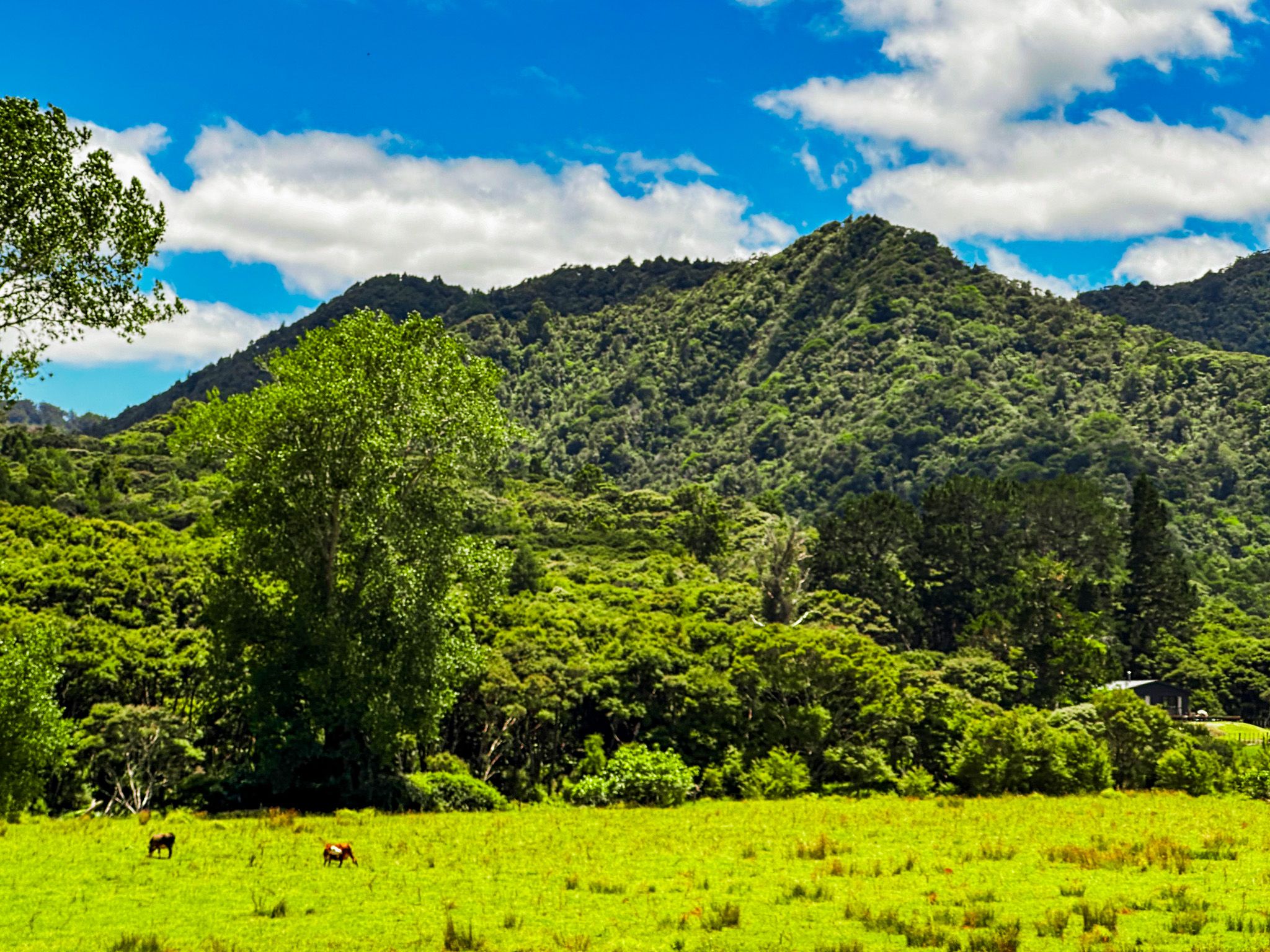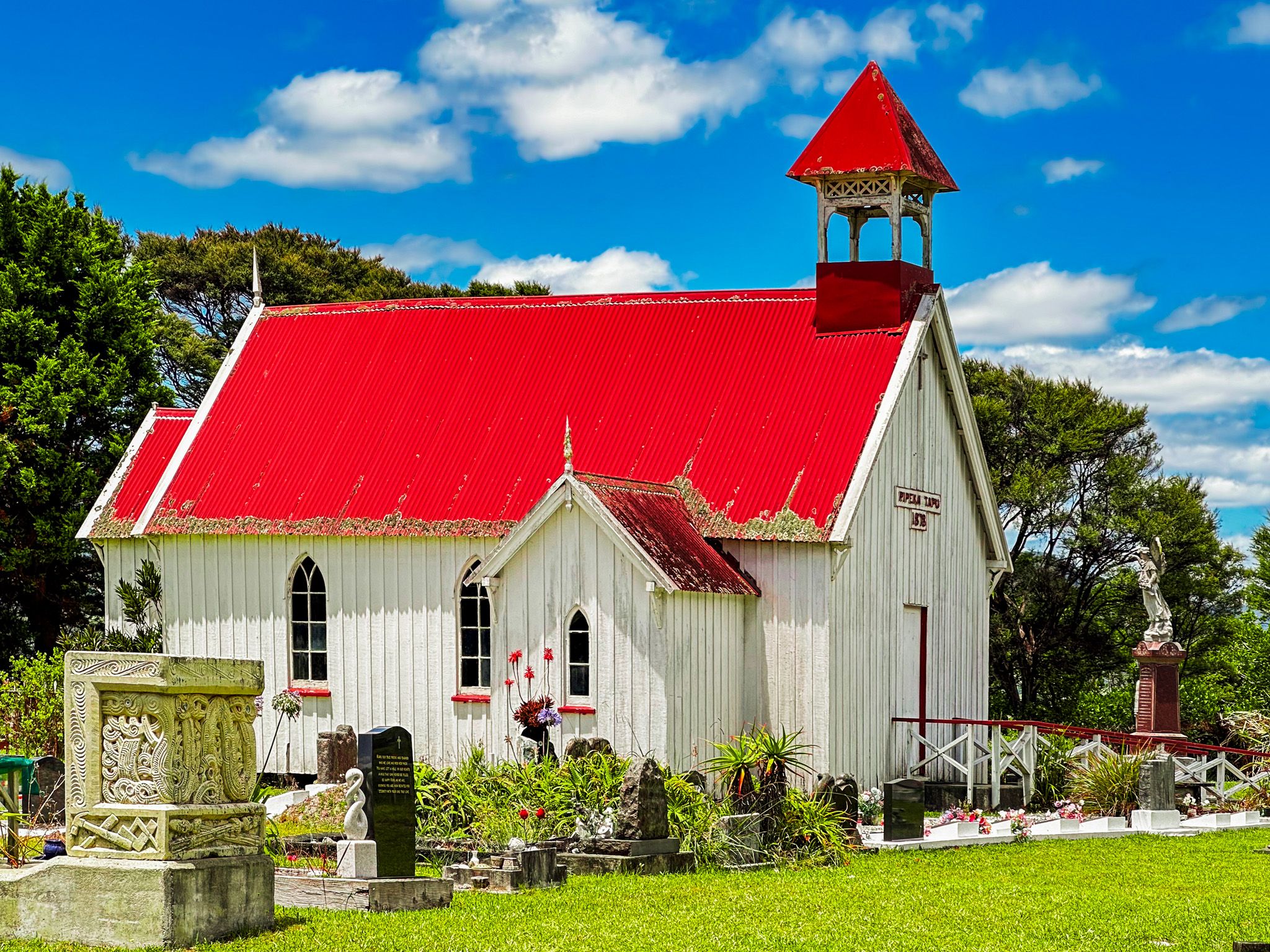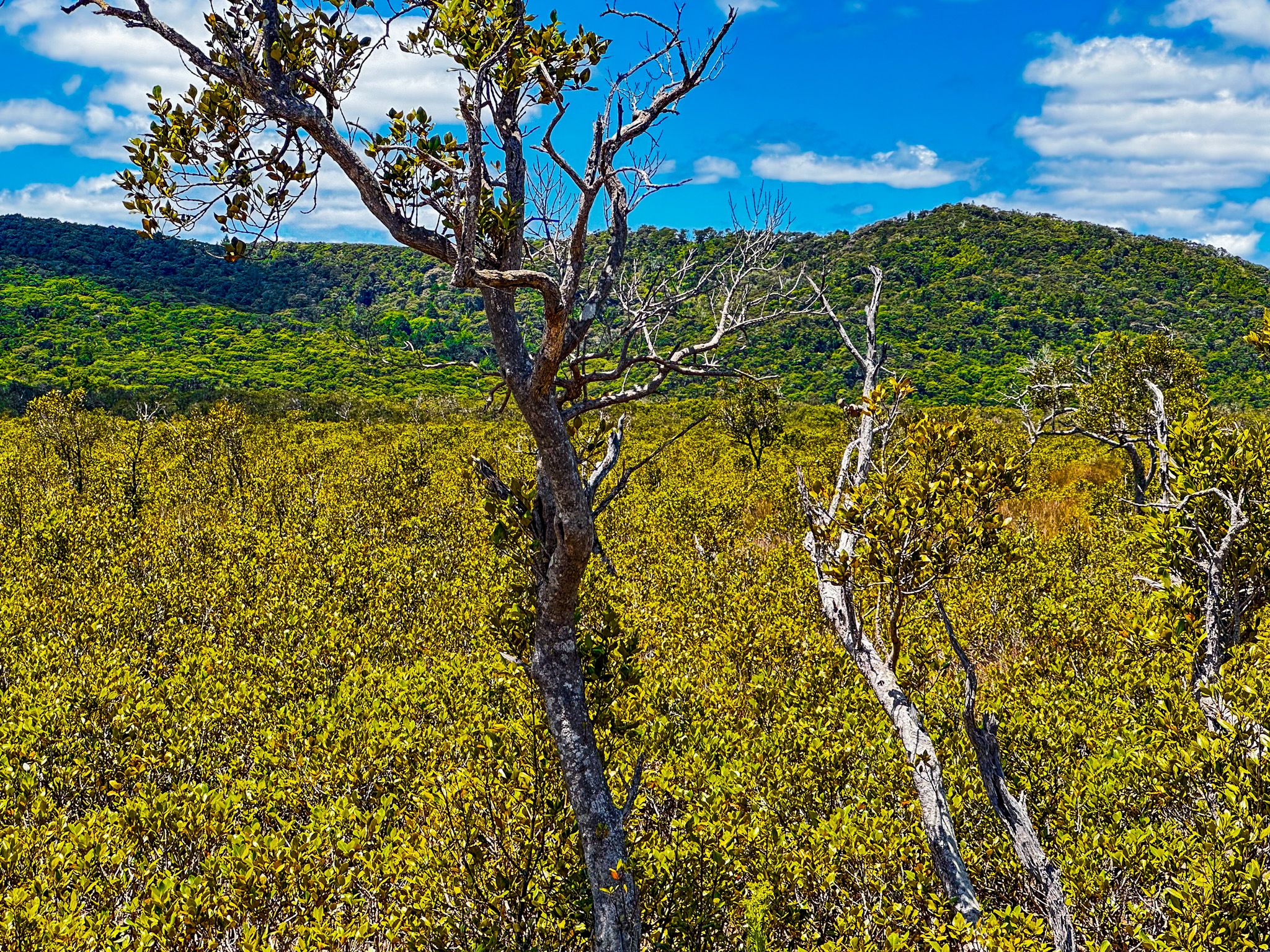West Coast Road, Northland, starts south of Kohukohu by the ferry ramp and ends at beautiful remote Mitimiti on the west coast. The drive is about 38 km long and takes about 50 minutes. The road starts by running west around the north side of text for a few km, then heads inland, winding through rugged, remote Northland scenery. Typically, the broader valleys are farmed, and many hills are either in exotic pine forests or native forest regrowth.
About halfway along the road, you will go through the small town of Panguru, near the Whakarapa River mouth as it flows into the harbour. There is a store, pub, and gas station.
The road is sealed to Panguru and continues around the river mouth, becoming unsealed as it heads inland towards Mitimiti. This section is even more rugged and remote. As you approach Mitimiti, watch out for horses wandering the road!
There are also several side trips to small coastal, mainly Māori settlements, typically with a pretty church and graveyard dating back to the 1800s. These include Motukaraka Point, Rangi Point, and Motuti. The Catholic church, St Mary’s, at tiny Motuti, is particularly historic.
This small rural church is associated with Bishop Jean Baptiste Pompallier, who established the Catholic Church in Aotearoa, NZ. He arrived from France in Hokianga Harbour in January 1838. The first mass quickly followed at Tōtara Point, north of Kohukohu. The bishop travelled by schooner around the North and South Islands, setting up 16 mission stations by 1844, funded by the French church.
At Waitangi in 1840, he extracted a guarantee of religious freedom in NZ from Governor Hobson during the discussion of the Treaty of Waitangi. There was to be no state-sanctioned church, and a so-called extra clause reads: “The governor says the several faiths of England, of the Wesleyans, of Rome, and also Māori custom, shall be alike protected by him”.
The mission also established a printing press in Kororareka (Russell) to publish bibles and prayer books in Māori. Unfortunately, from the 1850s onwards, it all became much more challenging. The Society of Mary wanted to focus more on the growing European population, and the wars in the Taranaki and Waikato from the late 1850s exacerbated this.
The mission essentially collapsed, and Pompallier left New Zealand in 1868 to raise money in Europe to pay off the church’s debts. This failed, and he resigned as bishop in 1869. He died in France in 1871 and was buried at Puteaux, but in January 2002, his remains were returned to Hokianga and were interred under the altar at St Mary’s in Motuti. Today, this pretty church is a place of pilgrimage for NZ Catholics.
